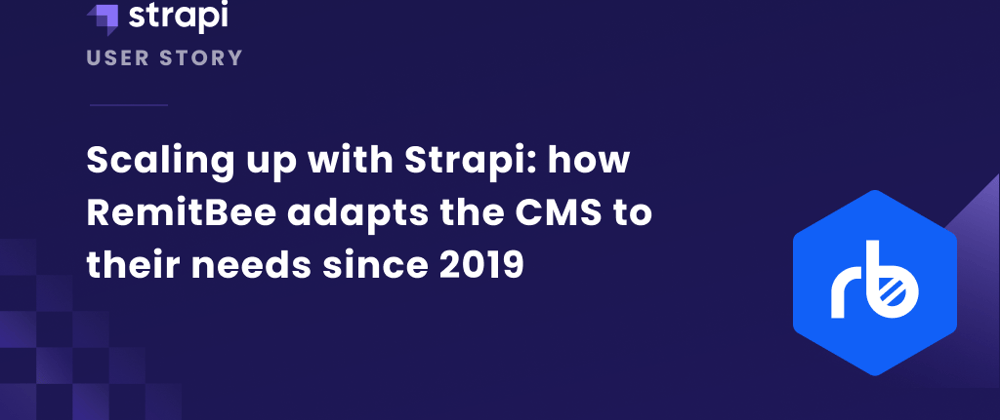RemitBee has been using Strapi for their website since 2019. In three years, their team grew from 5 to 50, they have successfully customized the CMS and added new features and multiplied the organic traffic by 20x.
Author: Anastasiia Shpiliak
Could you tell us more about Remitbee?
RemitBee is a full-stack-fin-tech startup in the heart of Mississauga in Canada. We hope to bridge the gap between people and their money by providing the most cost-efficient money transfer and currency exchange service. So far, we've saved our customers millions in fees and exchange rates.
How did your Strapi journey start?
Back in 2019, we built the product from scratch and decided to rebuild the website. Our main goal was to scale fast, so we needed flexible future-proof solutions.
We were searching for an all-in-one solution that could be used with a modern tech stack (Node.js and React), be user friendly, and easy to customize. Naturally, WordPress and other old solutions didn’t fit these requirements, so we explored modern solutions and chose Strapi. It was still in beta, but it looked like a promising community-driven project with an open-source code.
Strapi beta had only a few features available. Wasn’t it risky to use it in production back at the time?
Indeed, when we first tried Strapi, the feature set was basic but still powerful. There were components, dynamic zones, a media library that we could use for content creation.
We do not wait for the features to appear - we prefer doing everything ourselves. We were not worried because of the lack of features since Strapi allows us to easily add the functionalities we need by ourselves. It’s open-source, completely customizable and has an engaged community - with this set, the possibilities are endless.
What custom Strapi features did you create?
Lots of them! The most important ones are scheduling, content internationalization, and an SEO system.
The scheduling feature allows our marketers to plan the publication of the page or blog post. They can also unpublish the page at any time and publish it again when they need it.
Since we're a Canadian company, we must have a website in different languages. We built our internationalization and translation feature in early 2020 and are still using it.
Now, these features are natively available in Strapi (Draft & Publish states, internationalization, scheduling plugin), but back at the time, we could develop them by ourselves. Strapi means independence.
What about the SEO system?
At first, it was challenging to build an SEO system because of our tech stack - Node.js and React. But once we figured it out, SEO became a piece of cake.

We developed custom components that the content teams use whenever they create a new page. They can edit the meta content, tags, data, and run experiments independently from the dev team. Since that time, our organic traffic grew from 10k to 200k per month. Also, the search of our brand went up x5 since we started using Strapi.
How did Strapi help you to scale fast?
When we started, there were 6 people on the team and we had only 10 pages. Now, we are more than 50 team members and we built a website with 1500+ pages, including a blog and a help center.
Strapi allowed different teams across RemitBee to build new pages and publish the content effortlessly and efficiently. Our marketing and SEO teams can independently** create a webpage in 15-20 minutes instead of 2-3 days.** It helped us elevate our company to a new level in terms of content and page building. On top of that, any feature or improvement request we got from our team members was easily built and implemented.








Top comments (0)